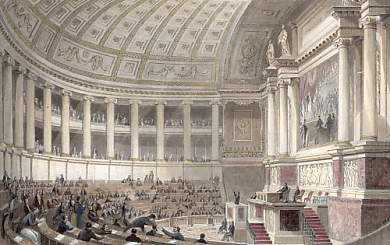|
The Spring
''The Spring'' (or ''La Source'') is a large oil painting created in 1912 by the French artist Francis Picabia. The work, both Cubist and abstract, was exhibited in Paris at the Salon d'Automne of 1912. The Cubist contribution to the 1912 Salon d'Automne created a controversy in the Municipal Council of Paris, leading to a debate in the Chambre des Députés about the use of public funds to provide the venue for such 'barbaric' art. The Cubists were defended by the Socialist deputy, Marcel Sembat.Béatrice Joyeux-Prunel, ''Histoire & Mesure'', no. XXII -1 (2007), Guerre et statistiques, ''L'art de la mesure, Le Salon d'Automne (1903-1914), l'av ... [...More Info...] [...Related Items...] OR: [Wikipedia] [Google] [Baidu] |
Francis Picabia
Francis Picabia (: born Francis-Marie Martinez de Picabia; 22January 1879 – 30November 1953) was a French avant-garde painter, poet and typographist. After experimenting with Impressionism and Pointillism, Picabia became associated with Cubism. His highly Abstract art, abstract planar compositions were colourful and rich in contrasts. He was one of the early major figures of the Dada movement in the United States and in France. He was later briefly associated with Surrealism, but would soon turn his back on the art establishment. Biography Early life Francis Picabia was born in Paris of a French mother and a Cuban father of Spanish descent. Some sources would have his father as of aristocratic Spanish descent, whereas others consider him of non-aristocratic Spanish descent, from the region of Galicia (Spain), Galicia. His birth year of 1879 coincided with the Spanish-Cuban Little War (Cuba), Little War; and though Picabia was born in Paris, his father was involved in Cuba ... [...More Info...] [...Related Items...] OR: [Wikipedia] [Google] [Baidu] |
Chambre Des Députés
Chamber of Deputies (french: Chambre des députés) was a parliamentary body in France in the nineteenth and twentieth centuries: * 1814–1848 during the Bourbon Restoration and the July Monarchy, the Chamber of Deputies was the lower house of the French Parliament, elected by census suffrage. * 1875–1940 during the French Third Republic, the Chamber of Deputies was the legislative assembly of the French Parliament, elected by universal suffrage. When reunited with the Senate in Versailles, the French Parliament was called the National Assembly (''Assemblée nationale'') and carried out the election of the president of the French Republic. During the Bourbon Restoration Created by the Charter of 1814 and replacing the Corps législatif, which existed under the First French Empire, the Chamber of Deputies was composed of individuals elected by census suffrage. Its role was to discuss laws and, most importantly, to vote taxes. According to the Charter, deputies were elected ... [...More Info...] [...Related Items...] OR: [Wikipedia] [Google] [Baidu] |

